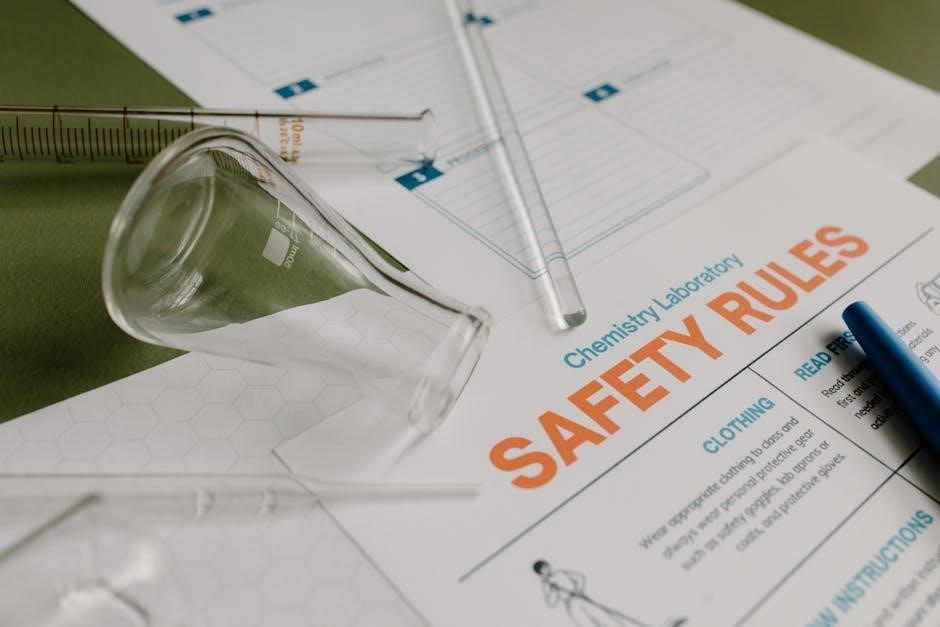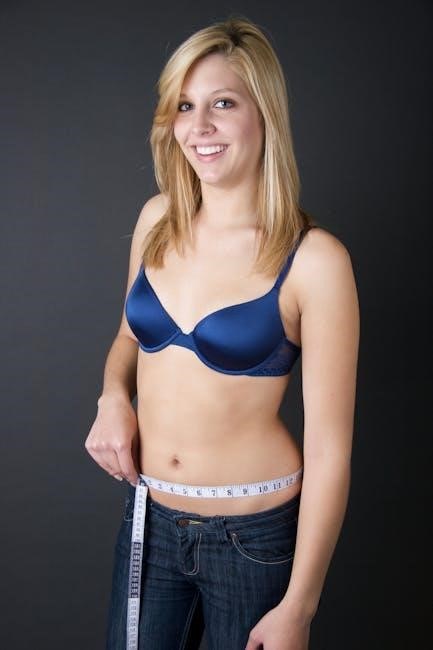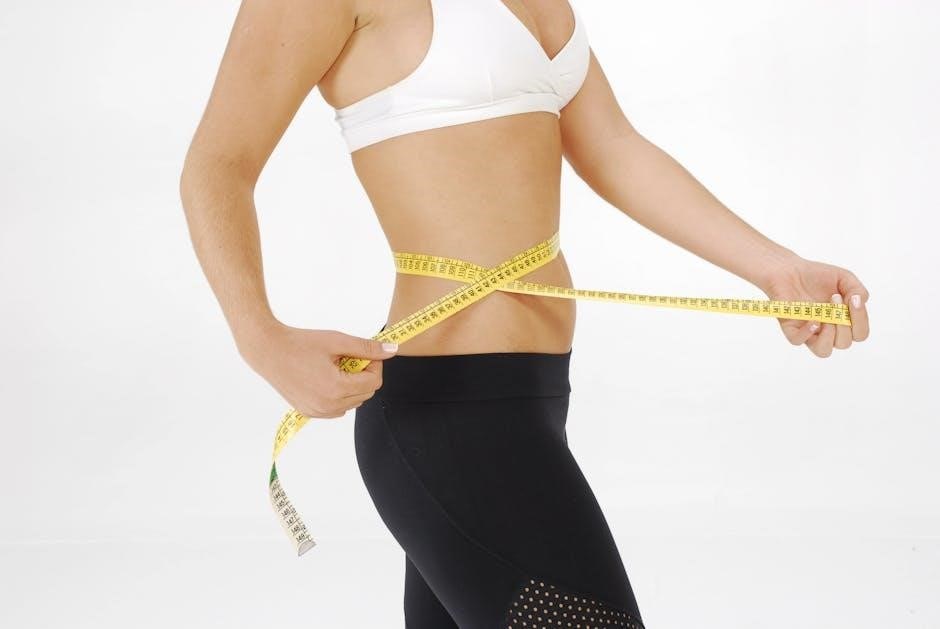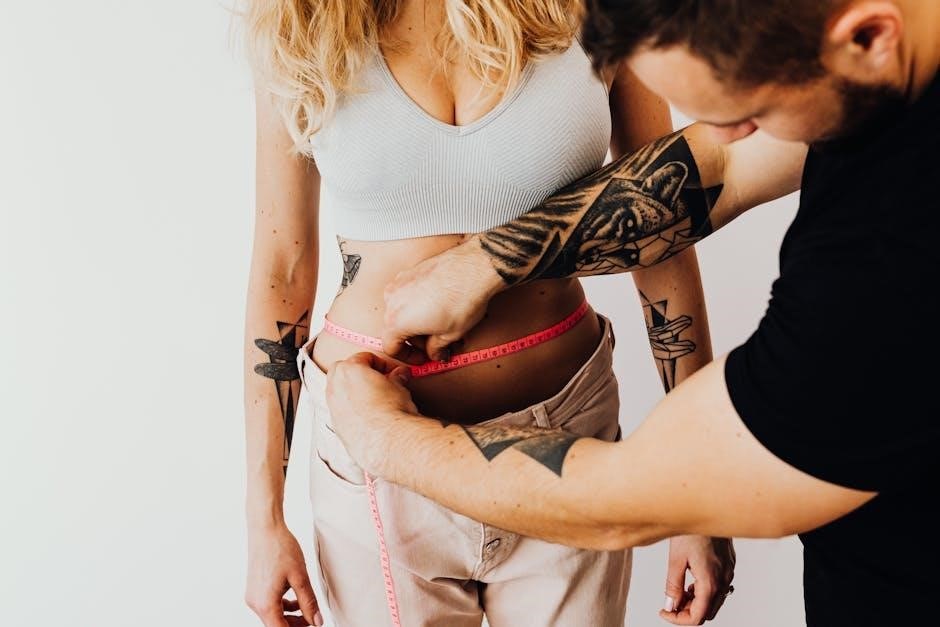Accurate bra measurement is essential for comfort, support, and confidence. Understanding your size ensures proper fit, preventing discomfort and health issues. Learn how to measure correctly for a flawless fit.
1.1 Why Accurate Bra Measurement Matters
Accurate bra measurement ensures optimal comfort, proper support, and prevents health issues like back pain or skin irritation. A well-fitting bra enhances confidence and improves posture. Incorrect sizes can lead to discomfort and a poor appearance in clothing. Understanding your true size is crucial for long-term breast health and overall well-being. It’s essential to measure correctly to avoid common fitting mistakes and enjoy the benefits of a perfectly fitted bra.
1.2 Brief Overview of Bra Sizes and Fit
Bra sizes consist of a band size and cup size, which together determine the perfect fit. The band provides foundational support, while the cup accommodates breast volume. Proper fit ensures comfort, prevents health issues, and enhances confidence. Ill-fitting bras can cause discomfort, skin irritation, or poor posture. Understanding your size is key to selecting bras that offer the right balance of support and style.
Understanding Bra Size Components
Bra sizes combine band and cup measurements. The band offers foundational support, while the cup accommodates breast volume, ensuring a balanced fit for comfort and confidence.
2.1 Band Size: What It Represents and How It Fits
The band size represents the measurement around the torso, just under the bust. It provides crucial support and stability. A snug fit is essential—too tight can cause discomfort, while too loose may lead to poor support. Proper band fit ensures the bra stays in place, distributing weight evenly for optimal comfort and posture.
2.2 Cup Size: Determining the Right Cup Fit
Cup size reflects the volume of the breasts relative to the band. Measure around the fullest part of the bust, ensuring the tape is parallel to the floor. Subtract the band size from this measurement to determine the cup size. Proper fit means the cups enclose the breasts fully without gaping or overflow. The right cup fit ensures comfort and support, accommodating breast shape and size variations.
How to Measure Your Bra Size
Use a tape measure to wrap around your ribcage for band size and fullest bust area for cup size, ensuring snugness without overtightening for accurate results.
3.1 Measuring the Band Size
To measure the band size, wrap a tape measure snugly around your ribcage, just below your bust. Ensure the tape is level and neither too tight nor too loose. This measurement corresponds to the band number in your bra size, providing essential support and stability. Accuracy here is crucial for a comfortable and secure fit, preventing issues like digging or slipping.
3.2 Measuring the Cup Size
To measure the cup size, wrap the tape around the fullest part of your bust, ensuring it’s parallel to the floor and not too tight. This measurement determines the cup size by comparing it to the band size. A proper fit ensures the cups are neither gapping nor spilling over, providing the necessary coverage and support for ultimate comfort and confidence.
Bra Size Charts and Conversions
Bra size charts and conversions help determine equivalent sizes across regions, like UK, US, Europe, and Australia, ensuring the right fit regardless of brand or location standards.
4.1 Understanding UK Bra Size Charts
UK bra size charts provide a standardized system to determine band and cup sizes. Band sizes are measured in inches, while cup sizes range from AA to G. The charts help convert measurements into precise sizes, ensuring a comfortable fit. Understanding UK sizes is crucial for accurate conversions and avoiding common fitting mistakes. Use these charts to find your perfect size and enjoy better comfort and support.
4.2 International Bra Size Conversions
International bra size conversions vary across regions, with differences in band and cup measurements. For example, a UK size 32G is equivalent to a US 32I, while European sizes may differ slightly. Understanding these conversions is crucial for online shopping across brands. Use conversion charts to find your size globally, ensuring a consistent fit. Accurate conversions prevent sizing mismatches and enhance comfort and support regardless of the brand or region.

Factors Affecting Bra Size
Body changes, weight fluctuations, pregnancy, aging, and health conditions can alter bra size. These factors impact both band and cup fit, requiring regular reassessment for optimal comfort.
5.1 Body Changes and Their Impact on Bra Size
Breast changes, such as growth or shrinkage, can shift bra size. Factors like weight gain, loss, pregnancy, and aging affect breast volume and band tightness. Regular measurements ensure proper fit and comfort, as fluctuations may require size adjustments. Monitoring these changes helps maintain support and prevents discomfort or health issues related to poor-fitting bras.
5.2 How Weight Fluctuations Affect Fit
Weight changes can significantly alter bra fit. Gaining weight may increase both band and cup sizes, while weight loss can lead to a looser fit. Even small fluctuations can cause discomfort or improper support, necessitating regular measurements to adjust sizes accordingly and maintain comfort and confidence. Monitoring weight-related changes ensures optimal fit and prevents issues like band tightness or cup overflow.

Common Mistakes to Avoid
Common mistakes include improper tape placement, not accounting for weight changes, and ignoring signs of poor fit, all of which can lead to discomfort.
6.1 Incorrect Band Fit: Too Tight or Too Loose
An improperly fitted band can cause discomfort and affect the bra’s overall support. A band that is too tight may dig into your skin, while one that is too loose can ride up, reducing stability. Ensure the band sits snugly around your ribcage without restricting breathing or causing discomfort. Proper fit is key to both comfort and effective support.
6.2 Incorrect Cup Fit: Gaping or Overflow
Incorrect cup fit can lead to discomfort and poor support. If the cups gape, the bra is too large, while overflow indicates the cups are too small. Proper fit ensures breasts fill the cups without bulging or leaving excess space. Adjusting the cup size or style can resolve these issues, ensuring a smooth, comfortable fit that provides adequate support and confidence. Correct cup fit is essential for both aesthetics and functionality.

When to Re-Measure Your Bra Size
Your bra size may change due to weight fluctuations, body changes, or health conditions. Experts recommend re-measuring every six months to ensure a consistent, comfortable fit.
7.1 Signs Your Bra Size Has Changed
If your bra feels uncomfortable, rides up, or the cups gape or overflow, it may indicate a size change. Weight fluctuations, pregnancy, or aging can alter your measurements. Notice if the band feels too tight or loose, or if straps dig into your shoulders. These signs suggest it’s time to re-measure for a better fit and support.
7.2 How Often to Check Your Bra Size
Experts recommend checking your bra size every 6 months to ensure a proper fit. Body changes, weight fluctuations, or hormonal shifts can alter your measurements. Regular checks help maintain comfort and support. If you notice discomfort, gaps, or tightness, reassess immediately. Life events like pregnancy or aging also warrant a size reevaluation. Consistent monitoring ensures your bra continues to provide optimal fit and confidence.

Tips for Different Body Types
Optimize bra fit by considering your body type. Petite frames benefit from narrower bands, while fuller busts need sturdy cups. Tailor your choices for ultimate comfort and support.
8.1 Bra Fit for Petite Frames
Petite frames require a bra that offers support without overwhelming the body. Ensure the band fits snugly but not too tightly, as this can cause discomfort. Opt for narrower bands to proportionally fit your torso. Cup size should align with your natural shape, avoiding excessive coverage. Choose styles with adjustable straps for a customized fit. Proper alignment ensures comfort and confidence, making petite-friendly bras a must for smaller frames.
8.2 Bra Fit for Fuller Busts
For fuller busts, a well-fitting bra is crucial for comfort and support. Opt for wider bands to distribute weight evenly and prevent digging. Choose cups that fully enclose the breasts without spillage or gapping. High-center-gore styles and seamed cups provide structure and lift. Adjustable straps with wider shoulders ensure stability. Look for breathable fabrics and molds designed for larger cup sizes to enhance comfort. Proper fit minimizes strain and promotes confidence for fuller figures.
Understanding Sister Sizes
Sister sizes are different bra sizes with the same cup volume, offering alternatives for fit preferences. They help find comfort and support when standard sizes don’t align perfectly.
9.1 What Are Sister Sizes?
Sister sizes are bra sizes that share the same cup volume but differ in band and cup measurements. For example, a 34B and a 36A are sister sizes, offering the same cup capacity but with varying band lengths. This concept allows for size flexibility, ensuring a consistent fit regardless of band or cup adjustments. Understanding sister sizes can help you find alternative sizes that maintain comfort and support while accommodating body changes or personal fit preferences.
9.2 How to Use Sister Sizes for Better Fit
Sister sizes provide flexibility in bra fitting by offering alternative sizes with the same cup volume. For instance, if your usual size feels too tight, try a sister size with a larger band and smaller cup. This ensures consistent comfort and support. To find your sister sizes, adjust the band size up or down and correspondingly change the cup size. This method is especially useful when standard sizes don’t fit perfectly, allowing you to maintain your preferred cup capacity while achieving a more comfortable band fit. Remember, while sister sizes can enhance fit, they may not always offer the same level of comfort as your exact size.
Caring for Your Bras
Regular washing and proper storage maintain shape and extend bra lifespan. Hand wash in cold water to prevent damage and ensure long-lasting comfort and support.
10.1 Importance of Regular Washing
Regular washing is crucial for hygiene and maintaining bra quality. Sweat and oils can damage fabric and elasticity. Hand wash bras gently in cold water to preserve shape and support. Avoid using harsh detergents or machines, as they can cause wear. Proper care ensures bras remain comfortable and last longer, providing consistent support and fit over time.
10.2 Proper Storage to Maintain Shape
To preserve your bras’ shape and extend their lifespan, store them properly. Hook bras on padded hangers or lay them flat in drawers. Avoid folding or stacking, as this can bend wires or distort cups. Use original packaging or soft pouches for protection. Keep them in a cool, dry place away from direct sunlight. Regularly check for wear and tear to ensure optimal condition and support.
How to Find Your Perfect Fit
Finding your perfect fit combines accurate measurements, trying styles, and ensuring comfort. Use size charts, try different designs, and focus on support and ease for everyday wear.
11.1 Combining Band and Cup Measurements
Combining band and cup measurements ensures a precise fit. Measure the band snugly around your ribcage and the cup around the fullest part of your bust. Use a size chart to match these measurements for your ideal size. Proper alignment ensures comfort and support, avoiding issues like gapping or tightness.
11.2 Trying Different Styles for Comfort
Exploring various bra styles enhances comfort and support. Consider underwire, wireless, balconette, or full-coverage options based on your preferences and body type; Try sports bras for active lifestyles or minimizer bras for a sleek look. Experimenting with styles ensures you find the perfect balance of comfort and confidence, tailored to your unique needs and activities.
Signs of a Correct Fit
A well-fitting bra ensures the band sits snugly, cups cover breasts fully, straps adjust without digging, and the center gore lies flat against your chest for optimal comfort and support.
12.1 Visual Indicators of a Well-Fitting Bra
A properly fitting bra displays smooth lines with no bulging or gapping. The cups fully enclose your breasts without spilling over, and the band remains level front to back. Straps lie flat on your shoulders, not digging in, and the center gore rests against your chest. These signs ensure a comfortable, supportive, and visually appealing fit, enhancing your overall confidence and posture.
12.2 Comfort and Support Check
A well-fitting bra should feel comfortable and provide adequate support. The straps should lie flat on your shoulders without digging in, and the band should feel snug but not restrictive. The cups should fully contain your breasts, preventing any overflow or gapping. Proper support enhances posture, reduces discomfort, and ensures long-lasting wearability, allowing you to move confidently throughout your day without distractions or pain.
